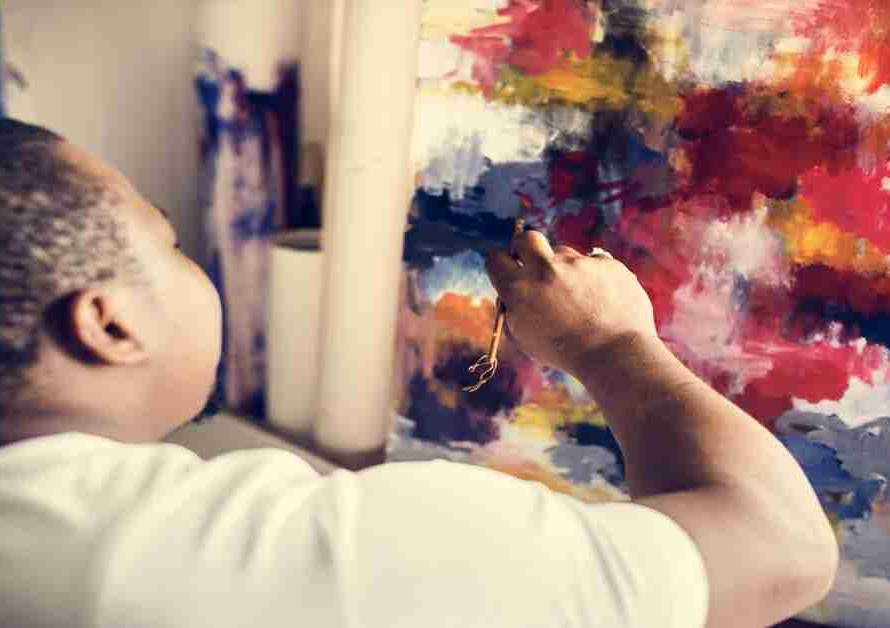Art can be considered a recreational activity or a luxury, yet it is much more than that. Art is an essential part of human culture, and the importance of art education adds numerous values to our life. The reasons why art education is crucial to everyone are manifold as discussed in this blog that addresses the usefulness of art education in personal growth, critical thinking, cultural awareness, and emotional intelligence.
1. Improving Creativity and Innovation
The Importance of Art Education is profound, particularly in how it fosters creativity and innovation. Art makes people think out of the box, open their minds, and present themselves in a very different manner. These creative thinking techniques are not confined to the field of the arts; they are a useful concentration that can be applied in many other areas of life, including science and technology, as well as in business and education.
When people work with art, it gives them the opportunity to play with various materials and methods, which makes them take a chance and experiment. As an illustration, students enrolled in visual arts tend to develop the habit of thinking in different directions and this aspect results in creative solutions in their studies and career. In such a world where creativity is given more and more consideration, the power of creative thinking can distinguish people and drive them to success.
2. Critical Thinking Skill Development
The Importance of Art Education is powerfully demonstrated in how it develops critical thinking. The study and interpretation of the works of art demand people to pay attention, pose questions, and think about different points of view. Such a questioning process contributes to the formation of analytical skills that are vital in most areas of life.
Students who work with art learn to be critical of the information and develop their own opinion. As an example, speaking about the content of a painting or the methods applied by an artist, makes students think and explain their ideas and prove their positions.
3. Developing Emotional Intelligence
Studying art enables people with the instruments to decipher and express their emotions well, which is a key component of the Importance of Art Education. This is an important part of personal development and can result in increased emotional intelligence. By learning art, one is taught to relate to their emotions and express them positively. As an example, stress or anxiety may be used as a therapeutic outlet and instead of drinking, the person can use painting or drawing as a form of processing their feelings. Moreover, the understanding and valuation of the feelings expressed in paintings enables people to identify with others and this brings greater bonds and understanding in human relationships.
4. Developing Cultural Sensitivity
Art reflects on culture, history and society. Knowledge of art opens people to various views and experiences and this encourages cultural awareness and appreciation. Studying diverse artistic movements, styles, and traditions, people can obtain some information about other cultures and their values.
As an example, the study of Indigenous art may enhance the perception of the cultural meaning and history of the piece, and the study of contemporary artists in the world may give insights into the contemporary social problem. This cultural awareness has become a necessity in the modern globalized world where embracing and valuing diversity is a significant prerequisite in creating an inclusive and cooperative environment.
5. Developing Trust and Self-Respect
Working with art may help to increase self-esteem and confidence to a great extent. Whenever people engage in art, they tend to feel a sense of achievement and pride in what they do. This sense of accomplishment is especially useful to students, who will develop a stronger sense of self-image and strive to explore new challenges.
Through art education, one gets a non-judgmental environment where one is able to express their creativity without being afraid of making mistakes. This independence enables students to be authentic and have a sense of ownership to their work.
6. Promoting Cooperation and Teaming
Most art projects are collaboration and teamwork based which develops valuable social skills. At work on a group mural, involved in a drama production or developing a multimedia presentation, students can learn to communicate productively, negotiate ideas, and appreciate the input of others.
Group art activities help students learn the value of collaboration and compromise, which are essential in life and work. Through the process of learning to collaborate towards a shared purpose, people will feel like a community and share the same mission, which can contribute to the whole educational journey.
7. Enhancing Academic Performance
Many studies have provided a positive correlation between art education and the performance in other subjects. When one is informed about art, it may increase cognitive skills, which translate to better performance in subjects like mathematics, reading and science. The skills that one acquires in art like critical thinking, problem-solving and creativity are transferable and can be useful in other fields of study.
Indicatively, mathematical skills have been associated with better performance by listening to music and spatial reasoning can be facilitated by visual arts.
8. Lifelong Learning and Individual Development
Becoming aware of art creates the spirit of life-long learning and self-improvement. The experience of art promotes curiosity and exploration, where one wants to explore new experiences and knowledge in their lives. This will be a promise to lifelong learning to keep up with the world that keeps changing.
Moreover, art education may motivate people to continue with their interests and hobbies outside the classroom. The experiences that one has gotten in learning about art could translate into enriching experiences in life whether in hobbies or community service or even in the career.
Conclusion
Learning about art is absolutely necessary to all people since it provides numerous opportunities that go way beyond the creating sphere. Art education is critical in personal and academic growth, whether it is improvement of critical thinking and emotional intelligence or enhancement of cultural awareness and gaining confidence.
In the Modern world, which is becoming more and more complex and interconnected, the importance of art education cannot be overestimated. When we use art as a part of the curriculum and get people to, at least, explore creative processes, we are able to make them well-rounded, empathetic and creative thinkers. Finally, the study of art can make us feel a better person and make us learn to know ourselves and the surrounding reality, which is why it must be an inalienable part of a complete education of every person.





